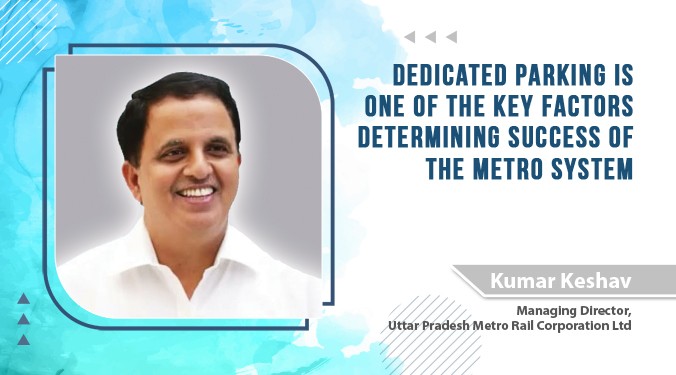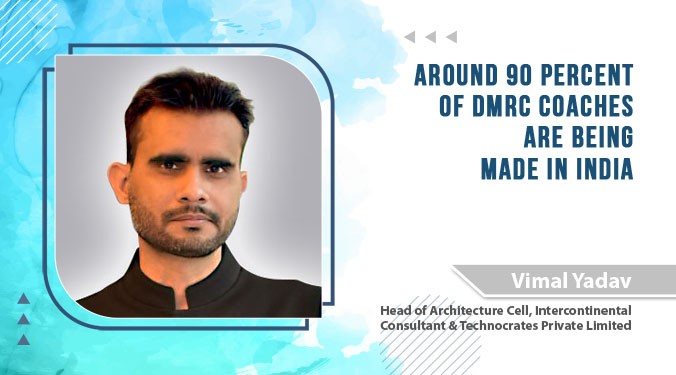Metro Rails define a city’s growth & development

The Transit Oriented Development along the metro corridor updates the social, commercial, and functional value of the city, says Charanjit Singh Shah. Founding Principal, Creative Group.
In a conversation with Ace Update, Charanjit Singh Shah talks about the evolution of Metro rail and multimodal transit.
How in your opinion have metros in particular evolved as a popular mass transit medium?
The introduction of metro rail changes the city beyond recognition within a few years. So is the case with the Indian cities. The spatial requirements of the cities, particularly the metro ones, are increasing rapidly. In the quest of providing the best services, the infrastructure is getting updated with the speed of clicking refresh icons on the computer screens.
Metro Rail is one such update. The rail-based ‘Mass Rapid Transit System’ has been widely regarded as a solution to most of the traffic and pollution issues that major cities throughout the world are currently experiencing. I remember the time when metro rail was first introduced in Kolkata in 1984. It was just a single line, with non-AC rakes, and did not cover the whole city. The evolution of Metro as a mass transit gained popularisation when intermodal connections came into the scene. From just a single route corridor to intermodal hub, the evolution of mass transit medium has come a long way. Each metro project our team works on, be it Chennai station, Koba Circle, Intermodal Hub Varanasi, AEC Metro stations and many others, the main aim is always to add to the functionality of these mass transit mediums.
What are some of the challenges when it comes to designing a metro railway station?
Designing a metro project is very different from the projects of designing a regular building. The road, along which the metro corridor lies, is already super congested. The first task until the construction work is on is to let the city function at its own pace.
While metro rail systems have come to define cities’ growth and development, they also present a number of difficulties that the city and its citizens must address in order to achieve a more holistic benefit. For example, the city’s skyline and urban form are distorted by a vast network of concrete viaducts. This can be remedied by taking the metro underground, but at a substantially higher per-kilometre cost. It is not always advisable to create grand and massive structures. The real challenge is to make the building a rhythmic addition to the surrounding without disrupting the skyline.
In the case of Akshardham Metro station, Gujarat, we, as a team, were very considerate about this addition of the building as a compliment to the Indian style of architecture.
To what extent can metros and railways together help India in achieving a robust multi-modal transport system?
I believe the economical establishment of any city or a country is not to be compared with how many fancy cars run through their streets. It is rather the efficient transportation system that ensures less carbon emission, less traffic congestion, and more liveable spaces. The idea of integrating the elements of urban transportation into a single coordinated, planned, and operational system for efficient use of available transportation resources and infrastructure is to ensure better mobility across a wide range of mode options. These two modes- Railways and Metros, when co-operated, play at two different scales- Railways cater the connections between different cities and states, while the metro improves the commutes within the city, hence if planned sensitive enough, they both collectively could make many regions of India fluent in sense of transportation. India being a rapidly developing country has scope of blooming in many sectors- commerce, tourism, administrative etc. All these sectors when complemented with well-planned inter and intra city connections have a potential to boost the overall economy of the country.
What impact will it have on real estate; likewise do you see this development as a pathway to building and construction of newer cities?
Cities can never be built, or created, they are evolved. From identifying the suitable route of the corridor, to creating an ideal design of the station complex, we, as designers, take small steps in evolving that city. The areas lying along that corridor or closer to the metro complex become the most potential zones of the city and hence get an immense increase in the land cost. This transforms the area into a suitable site for the development of commercial activities, generating revenues. Here comes the role of Real Estate. Now it’s not just the route or traffic, or commute that concerns the designers, the other elements like urban form, maximum utilisation of the spaces, etc. need to be taken care of as well. The Transit Oriented Development along the metro corridor updates the social, commercial, and functional value of the city.
34
Cookie Consent
We use cookies to personalize your experience. By continuing to visit this website you agree to our Terms & Conditions, Privacy Policy and Cookie Policy.









